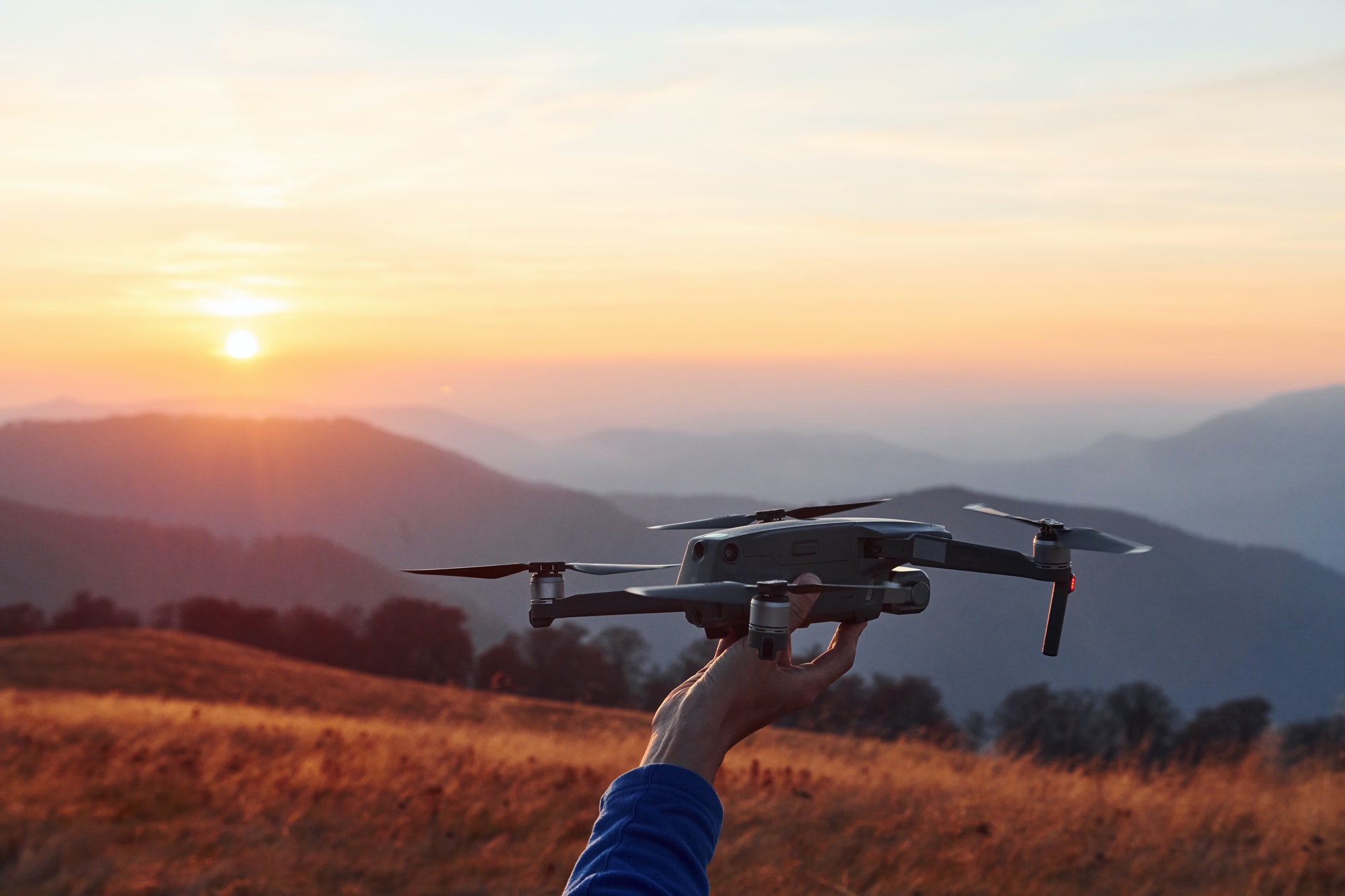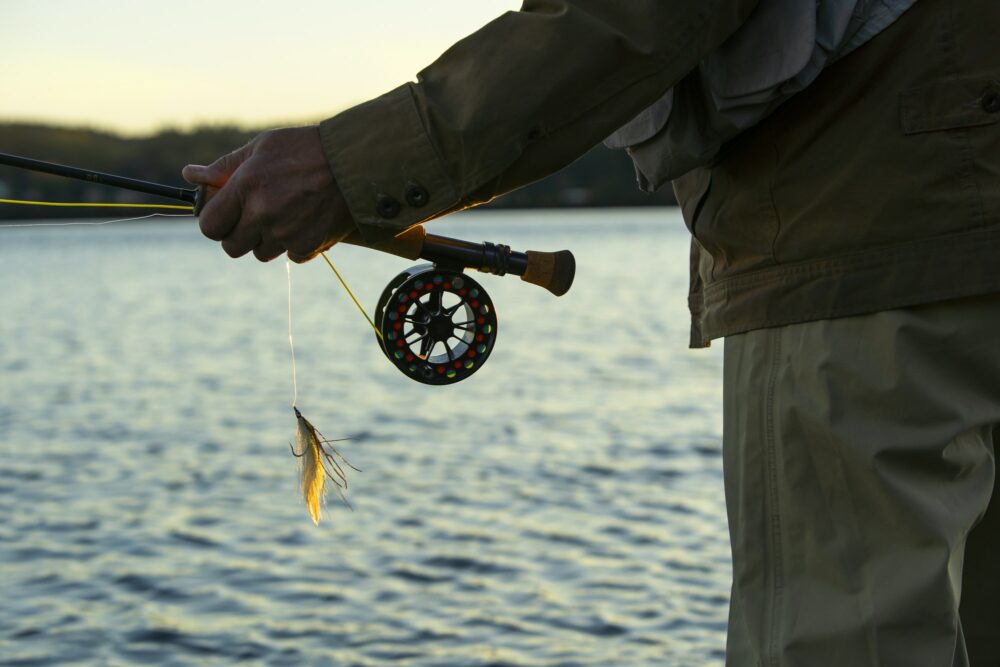
Finding the trouts, no hunting, or searching required. It’s X marks the coordinate. “Fishing with a drone is dividing the fishing community and drawing the ire of some politicians and scientists.”
Drone Fishers Are in the Hot Seat
Is fishing with a drone the way of the future? Not everyone is on board.

Abe Musselman is a journalist based in Philadelphia, Pennsylvania. He covers energy and the environment, with a special interest in marine life.
By Abe Musselman / Hakai Magazine.com / May 26, 2022
The giant trevally, a stubborn and powerful apex predator, is one of Hawai‘i’s most coveted game fish. Hiding out in coral reefs and caves, the fish is tough to see when fishing from shore. But Brandon Barques, a 35-year-old construction worker in Honolulu, knows how to find it. Watching through the video feed streaming to his phone, Barques sends a flying drone carrying a fishing line out over the surf, searching for large sandy canals and depressions in the seafloor. When he finds the right spot, he triggers the drone to drop the line. Then he calls the drone back—and waits for a bite.
 Among anglers, smaller trevally are called papio, but fish over 4.5 kilograms are known as ulua. Barques has been fishing since he was young but says he’d never caught a proper ulua until he started using a drone. In 2017, with the assistance of his metallic companion, he finally landed a 54-kilogram giant. Drone fishing is a new world, he says. “It changes the way we fish and the way we think.”
Among anglers, smaller trevally are called papio, but fish over 4.5 kilograms are known as ulua. Barques has been fishing since he was young but says he’d never caught a proper ulua until he started using a drone. In 2017, with the assistance of his metallic companion, he finally landed a 54-kilogram giant. Drone fishing is a new world, he says. “It changes the way we fish and the way we think.”
Drones a dime a dozen
As drones have become more commercially available over the past decade, recreational fishers have discovered a new way to scout for fish and cast a line. Some newer flying drones are purpose built for fishing—they’re waterproof and can carry heavy loads of bait. Amateur anglers can even get their hands on a submarine drone armed with sonar and a light-up lure. While some videos appear to show anglers hooking and hauling in fish with drones, most of these devices weigh only a few kilograms, making it unlikely that they could reliably reel in fish, especially heavy fish like ulua. But they can carry a hook farther than even the most expertly cast line.
Barques sees fishing with drones as just another set of difficult skills to master. “I’ve seen a lot of people give up,” he says. “They buy a [US] $3,000 drone and fish for months … and still never catch anything. So I can’t say it’s cheating.” He says drones have also made it possible for people with mobility issues, like his uncle, to fish for ulua.
But not everyone shares Barques’s excitement for these high-tech fishing assistants. Within the fishing community, some anglers are questioning the wisdom and fairness of fighting fish with robots.

Launch and fish. Envato
“Let’s just take all the sport out of sportfishing”
A user named slonezp wrote sarcastically in a 2015 discussion thread on bassresource.com. Others complain that buzzing drones disrupt the peaceful atmosphere they associate with fishing, with one user calling them “oversized mosquitoes.” But some recreational fishermen believe drones are no worse than other technologies, like sonar fish finders and GPS navigation, that give them an edge.
In recent years, the dissent against drone fishing has reached the halls of government. Several US states, including Michigan and Oregon, have already banned fishing or hunting with drones. South Africa enacted a ban on drone fishing last year after researchers documented internet videos of fishers catching protected sharks, like the dusky shark. More recently, a bill introduced this year to the Hawai‘i legislature seeks to ban using “unmanned aerial vehicles for the purpose of taking aquatic life.” While an earlier draft of the bill banned the use of drones for aerial surveillance, the latest version allows it and only bans using drones to transport fishing gear like lines and bait. The bill has passed both houses and is awaiting signature by the governor.
 Before he started fishing with a drone, Barques, in pursuit of the ulua, used to have to kayak past the shallow reefs to drop his line in deep water—a difficult and sometimes dangerous journey. Advocates for the ban worry that drones will increase the number of fishing lines in deep water, simply by making it easier for fishermen to get to that depth. This might raise the chance that a hook will snag a surfer, boater, or protected animal such as a monk seal, says Brian Neilson, administrator of the Hawai‘i Department of Land and Natural Resources Division of Aquatic Resources. However, these issues existed before drones, and while Neilson says his office has received complaints about drones in recent years, it’s not clear that they have increased the number of incidents.
Before he started fishing with a drone, Barques, in pursuit of the ulua, used to have to kayak past the shallow reefs to drop his line in deep water—a difficult and sometimes dangerous journey. Advocates for the ban worry that drones will increase the number of fishing lines in deep water, simply by making it easier for fishermen to get to that depth. This might raise the chance that a hook will snag a surfer, boater, or protected animal such as a monk seal, says Brian Neilson, administrator of the Hawai‘i Department of Land and Natural Resources Division of Aquatic Resources. However, these issues existed before drones, and while Neilson says his office has received complaints about drones in recent years, it’s not clear that they have increased the number of incidents.
To Leimana DaMate, executive director of the Aha Moku Advisory Committee, an administrative body within the Hawaiian state government that advises on environmental issues, the rise of drone fishing also raises a particular worry for Indigenous people. In a traditional practice that continues today, Native Hawaiians set aside certain ocean areas for fishing. “If you have a drone that can go and find those areas, then it’s going to be raided and raped by ocean users who do not care about the cultural aspect of the area,” she says.

The old fashioned way – “Lefty’s Deceiver.”
The impact of so-called ‘sport fishers’ using drones is worrisome to scientists who study fisheries’ stability
 According to Alexander Winkler, a marine ecologist at the Algarve Centre of Marine Sciences in Portugal whose work contributed to the South African ban on drone fishing, the emergence of drone fishing comes against the backdrop of scientists’ increasing understanding that recreational fishing—not just commercial fishing—can have a sizable effect on fish populations.
According to Alexander Winkler, a marine ecologist at the Algarve Centre of Marine Sciences in Portugal whose work contributed to the South African ban on drone fishing, the emergence of drone fishing comes against the backdrop of scientists’ increasing understanding that recreational fishing—not just commercial fishing—can have a sizable effect on fish populations.
But drones are far from the only technology to shake up sportfishing in recent years, says Winkler: scented fish lures, improved hooks, and even social media, which fishers use to trade tips and fishing spots, can make fishing more efficient—and tougher to regulate. “You can’t ban WhatsApp just for fishing,” says Winkler. Once governments figure out how to manage drone fishing, he says, there might be a place for it.
Despite the pushback, drone fishing has won plenty of devotees in Hawai‘i and beyond. Still, Barques sometimes catches the side-eye from others fishing from the beach. “Just the people who cast and go out every weekend and never catch one,” he says. “And then I invite them with us.”
NOTE: Featured image is a helicopter drone with camera.
SUPPORT HAKAI MAGAZINE:
Hakai Magazine is the only journalism outlet to focus entirely on the science and societies of the world’s oceans and coastlines. Founded in 2015 in Victoria, British Columbia, we have more than 300,000 monthly readers from across the globe. We’ve won major journalism awards and brought attention to issues that matter: problems such as marine wildlife trafficking and the perils of deep-sea mining; and solutions, from the use of traditional knowledge to restore habitats to communities banding together to fight plastic pollution.
is the only journalism outlet to focus entirely on the science and societies of the world’s oceans and coastlines. Founded in 2015 in Victoria, British Columbia, we have more than 300,000 monthly readers from across the globe. We’ve won major journalism awards and brought attention to issues that matter: problems such as marine wildlife trafficking and the perils of deep-sea mining; and solutions, from the use of traditional knowledge to restore habitats to communities banding together to fight plastic pollution.







